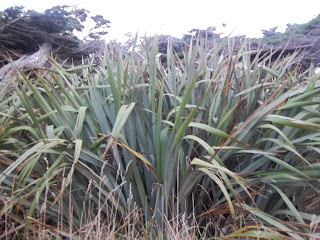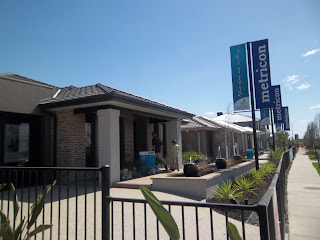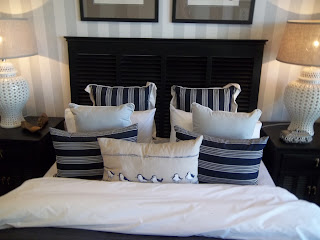I have included photographs of a few interesting buildings in Southland. I might add that some of the more picturesque buildings pictured below are not good examples of most homes in Southland, which are usually large and well looked after. People generally do not live in corrugated iron shacks. Although corrugated colour bond is a very trendy building material.
The shop in the photograph below is not in Southland. In fact it is situated in Omarama, in Otago, where we usually stop on our way down south. But it is typical of shops in New Zealand that sell NZ products made with sheep and possum wool, plus outdoor gear suitable for the coldest, wettest and snowiest days. We usually visit most of these shops, and then spend our money in a couple of shops in Wanaka.
Nor is this cafe in Southland. It is in Geraldine, Canterbury, a favourite coffee stop for us, and on a lovely warm day it is great to sit out under the trees. But on this occasion there were too many people enjoying their coffee inside, so no room for us. It was a little too chilly for outside. So we went across the road, and drank our coffee in a very stark and empty cafe. Lucky people in our favourite cafe.
.We walked down a very deserted Dee Street in Invercargill. The only other person was a lone cyclist in front of us. Sadly many of the shops on this side of a once very bustling and popular shopping street, are deserted, partly due to people shopping at the big shops (chains) elsewhere, and partly due to the new earthquake regulations for buildings.
The owners of old buildings will have to bring all their buildings up to earthquake regulations. A very costly exercise. And the question will then be,'Who will be able to afford to then rent the buildings?' The earthquakes in Christchurch have proved to be problematic for people throughout New Zealand.
The Grand Hotel, once the most expensive and prestigious hotel in Invercargill, now the home for students looking for cheap accommodation. When the Queen and Duke of Edinburgh visited here in the mid 1950's they stayed in the hotel, and came out onto one of the balconies to wave to the people below. Times have changed. The new building regulations may sound the death knell of this beautiful old hotel.
This is all that is left of Ryal Bush Primary School, which closed twenty years or so ago. All that remains are the two monkey puzzle trees, the new classrooms on the left, and the tennis courts. The two main classrooms have long gone, as have the local hall, church, shop and blacksmith/garage which once made up the community of Ryal Bush. Wooden buildings are not built to last, obviously. Or is this progress?
I loved attending Ryal Bush Primary School, with the huge grounds, swimming pool, tennis courts and gardens, all at our disposal. So much time was spent on using these activities, with just a little time spent on school work. School was fun, fun and more fun. Obviously I became a teacher so that I could ensure that the next generation of children spent more time on learning to read, write and do mathematics and less time on fun and wasteful activities.
I know it is not Christmas but Shona is busily sorting out her Christmas shop, in readiness for a group visiting the following day. This is a seriously dedicated shop, devoted to all things related to Christmas. Barry and Diana and their grandson Ben, posing with Walter, in front of their daughter's new house. This house was transported down from Christchurch, and reinstated on a concrete base in Wallacetown. The garage and a bay window came down on a separate truck. The house was not damaged in the earthquakes in Christmas, but it was in a red area, and therefore could not be lived in. At least the house is now being used, rather than lie in disuse in one of the suburbs in Christchurch.
Another lovely cafe, great ambiance and excellent coffee. The Magpie. We found three cafes that we particularly liked in Invercargill, and all produced the most delectable coffee - The Three Beans, Nicolls, and The Magpie. We spent some time, and some money, at these venues. Good for the local economy.
Another visit to the mouth of the Waiau, this time to see the new addition to the property. No shack this time, but a small house, transported from a farm somewhere in Southland. And now there are large water tanks, and a septic system, so all modern conveniences are installed. Perfect for a few quiet days away, and to shelter from the elements when down there fishing or whitebaiting. No wi fi. I tried to pick up a signal on my telephone. But they do have satelite television, I see.
And the views of the surrounding hills and mountains are superb. A lovely place to sit, on the couch, if the sun is shining, and snooze and read in the warmth. Perfection.
The shack, which has been moved to the other side of the property, is still very comfortable, and provides extra accommodation. This is a true fishing shack, among the flax bushes, down at the Waiau river mouth. Obviously the owners collected the corrugated iron from a variety of sources.
I loved this whitebaiting shack when we visited last year. Even the car looked the same. Maybe we could build a tin extension onto our caravan down in the south of France.
On the way back from the Waiau mouth, we travelled through Ohai, once a bustling coal mining town, but now a deserted ghost town.
The view over a wasteland of coal sludge to the once active coal mine. I think only an oil find will save the town from complete disintegration. I have been told Ohai is a favourite haunt of people seeking a certain substance that makes people feel very happy.
And a hive of industry at the front of the Wallacetown tavern. The men from the local rugby club helping to sand down the pub, in readiness for a paint job. A complete makeover. We are looking forward to seeing the results on our next visit.
I could have taken many more photographs, of beautiful houses and pubs, and shops, but I tend to forget to get my camera out. I also forgot to take photographs of Vickery Court, where my sister, Mavis, now lives. A really lovely retirement home too. My apologies here.























































